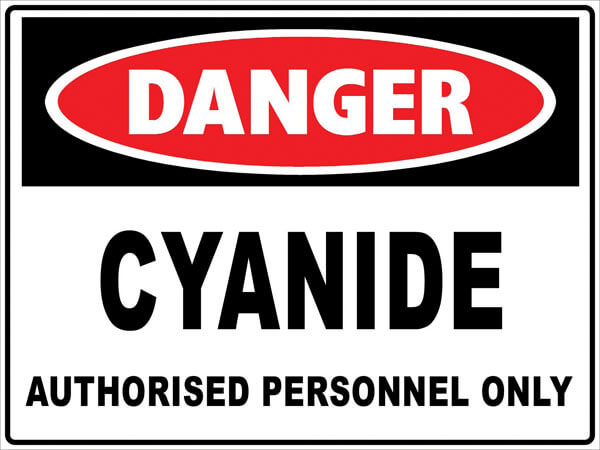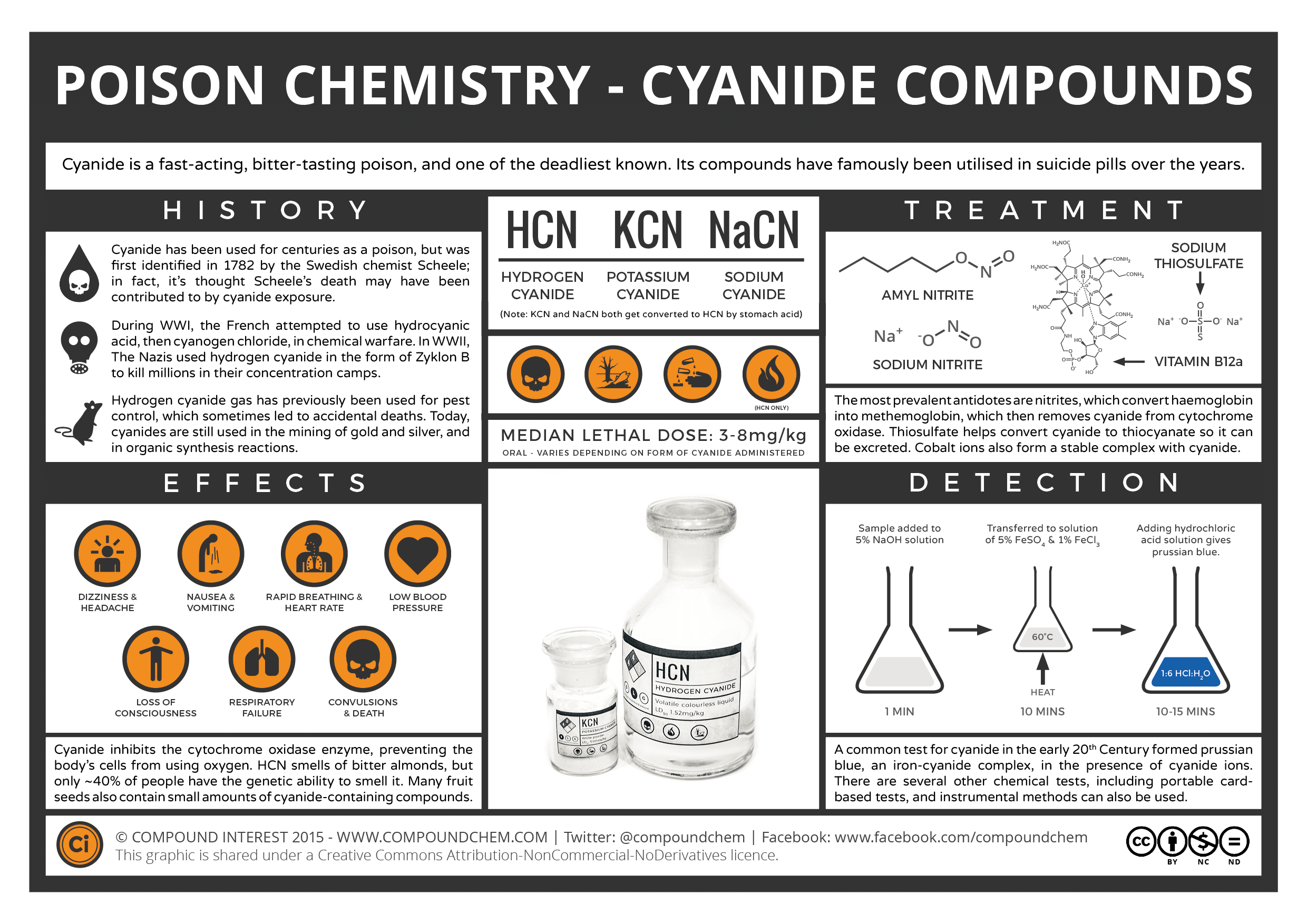Almost all solutions in the plant contain cyanide, and in the absence of any other information it should be assumed that all solutions contain cyanide.
Because of the toxicity of sodium cyanide, it is important that all persons coming in contact with it be completely familiar with and observe the established safety practices.
Sodium cyanide is a rapidly fatal poison when taken internally. Poisoning may occur if sodium cyanide dust is inhaled. Prolonged contact with the skin may cause irritation and possibly poisoning, particularly if there are open wounds or skin abrasions. Sodium cyanide causes eye burns.
Sodium cyanide in contact with acids or weak alkalies liberates highly toxic and flammable hydrocyanic acid (HCN) gas.
Also toxic amounts of HCN can be liberated from water solutions of sodium cyanide. View a cyanide MSDS.
The basic NaCN safety precautions are:
- Do not breathe dust or gas. Wear an approved dust respirator when there is danger of inhaling cyanide dust (such as when handling cyanide containers or mixing cyanide).
- Avoid contact of cyanides with the skin. Never permit it to contact open wounds or skin abrasions. Wear protective gloves when handling solid cyanides. Wear rubber gloves when handling cyanide solutions. Wash hands and gloves thoroughly with running water after handling cyanides.
- Do not get cyanide in eyes. Wear approved chemical splash goggles when handling cyanide solutions and when there is danger of splashing.
- Immediately sweep onto a shovel any spilled cyanide and place in a suitable container.
- Take every precaution to keep acids or weak alkalies from contacting sodium cyanide. Do not store acids or weak alkalies.
- Never store, handle, or consume food or beverages in areas where cyanide is being used, handled, or stored. Do not smoke in these areas.
- When storing, keep the sodium cyanide dry. Keep containers closed. Store the sodium cyanide in a dry, well-ventilated area.
Symptoms of Cyanide Poisoning
Personnel should be constantly alert and ready to take immediate action in case of exposure to cyanide. Do you have a cyanide antidote kit? The following symptoms of cyanide poisoning are easily recognized:
- Reddening of the eyes
- Headache
- Irritation of the throat
- Weakness of arms and legs
- Palpitation
- Giddiness
- Difficulty in breathing
- Collapse and convulsions
- Salivation
- Numbness
- Nausea
Effects of Exposure to HCN Vapour
The following toxicity data are the “Reported (Estimated) Human Response to Various Concentrations of HCN Vapors“:
| 300 ppm | Rapidly fatal |
| 100 – 240 ppm | Fatal within 1/2 to 1 hour |
| 45 – 54 ppm | Tolerated for 1/2 to 1 hour without immediate or delayed effects |
| 20 – 40 ppm | Slight symptoms after several hours |
| 10 ppm | Threshold Limit / Time-Weighted Average for a normal 8—hour workday |
| 2 – 5 ppm | Odor threshold – smell of bitter almonds |

https://www.911metallurgist.com/good-concentrator-safety-guidelines-practices
https://www.911metallurgist.com/lead-nitrate-safety
